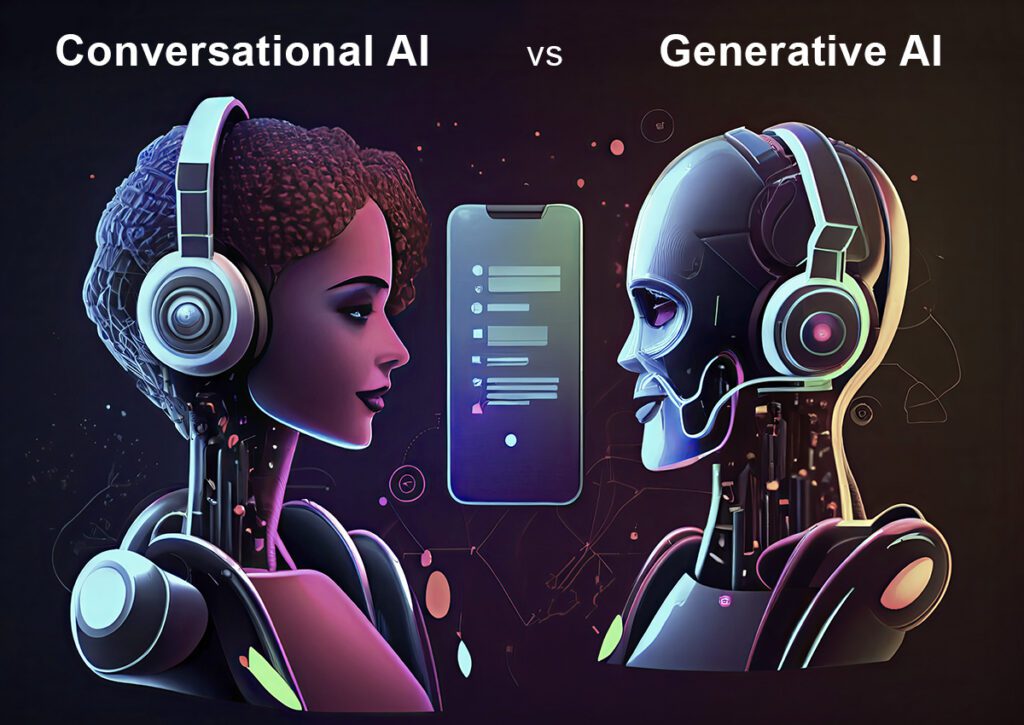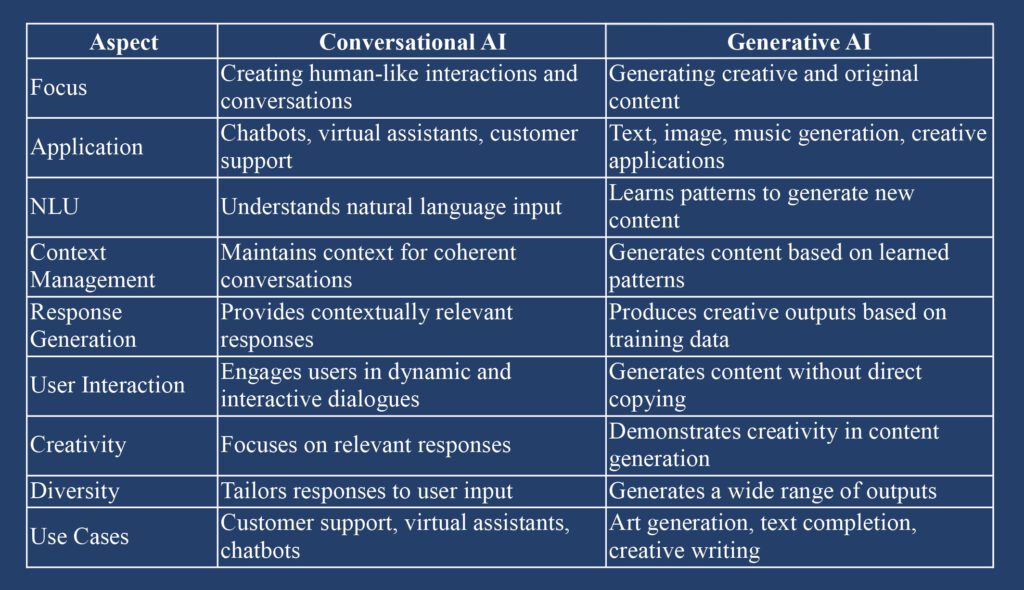The two most prominent technologies that have been making waves in the AI industry are Conversational AI and Generative AI. They have revolutionized the manner in which humans interact and work with machines to generate content. Both these technologies have the power and capability to automate numerous tasks that humans would take hours, days, and months.

Conversational AI is characterized by its ability to think, comprehend, process, and answer human language in a natural manner like human conversation. At the other end, generative AI is defined as the ability to create content autonomously such as crafting original content for art, music, and texts.

The amalgamation of conversational AI and generative AI leads to:
• In-depth Conversations
• Human-like Experience
• Enterprise Support
• Decision Support
Exploring conversational AI
Conversational AI employs NLP and finds applications where a human touch is crucial. The best applications of conversational AI are chatbots and virtual assistants. The most popular example would be Amazon’s Alexa. They are efficient at collecting, comprehending, and sharing information just like human virtual assistants. Rule-based and ML-based approaches are majorly utilized to build conversational AI systems.
Understanding generative AI
Generative AI is creative and content-generating driven. This technique produces fresh content at record time, which may range from usual texts to intricate digital artworks. The development of GTP-3 and other pre-trained transformers (GTP) models has been a trendsetter in content creation.
Technologies involved
With the use of NLP, conversational AI takes on tasks like speech recognition and intent recognition enabling systems to understand content, tone, and intent, and conduct meaningful conversations. Generative AI relies on deep learning techniques such as GTP models and variational autoencoders to craft fresh human-like content.
Training data requirements
Huge volumes of datasets’ of human interactions are required to train conversational AI. It is through these training data, that AI learns to interpret and answer to a plethora of inputs. Generative AI models require datasets to understand styles, tones, patterns, and data types.
User experience & human interaction
Conversational AI believes in meaningful conversations. Thus, provides quick, direct, crisp, and relevant answers. Generative AI does not engage directly but contributes to user experience by coming up with useful content like blogs, music, and visual art.
Restrictions & ethical concerns
Conversational AI might face a slight struggle with context and nuanced interpretations that often lead to misunderstandings. Generative AI raises ethical concerns pertaining to widespread misinformation and biases due to incorrect training data. Therefore, it becomes imperative to strike a balance between autonomy and ethical responsibility. If the training data is accurate and error-free, the final AI model will be faultless.
What does the future hold?
The trend we observe for conversational AI is more natural and context-aware interactions with emotional connections. Generative AI’s future is dependent on generating various forms of content like scripts to digitally advance context.
Use cases:
• Conversational AI is used in industries like healthcare, finance, and e-commerce where personalized assistance is provided to customers.
• Generative AI is mostly applied to creative domains like content creation, entertainment, design, etc.
Wrapping it up
It would be right to claim conversational AI and Generative AI to be 2 sides of the same coin. Each has its own sets of positives and advantages to create content and data for varied usages. Depending on the final output required, AI model developers can choose and deploy them coherently.
Also Read: Limitless Possibilities through RLHF

